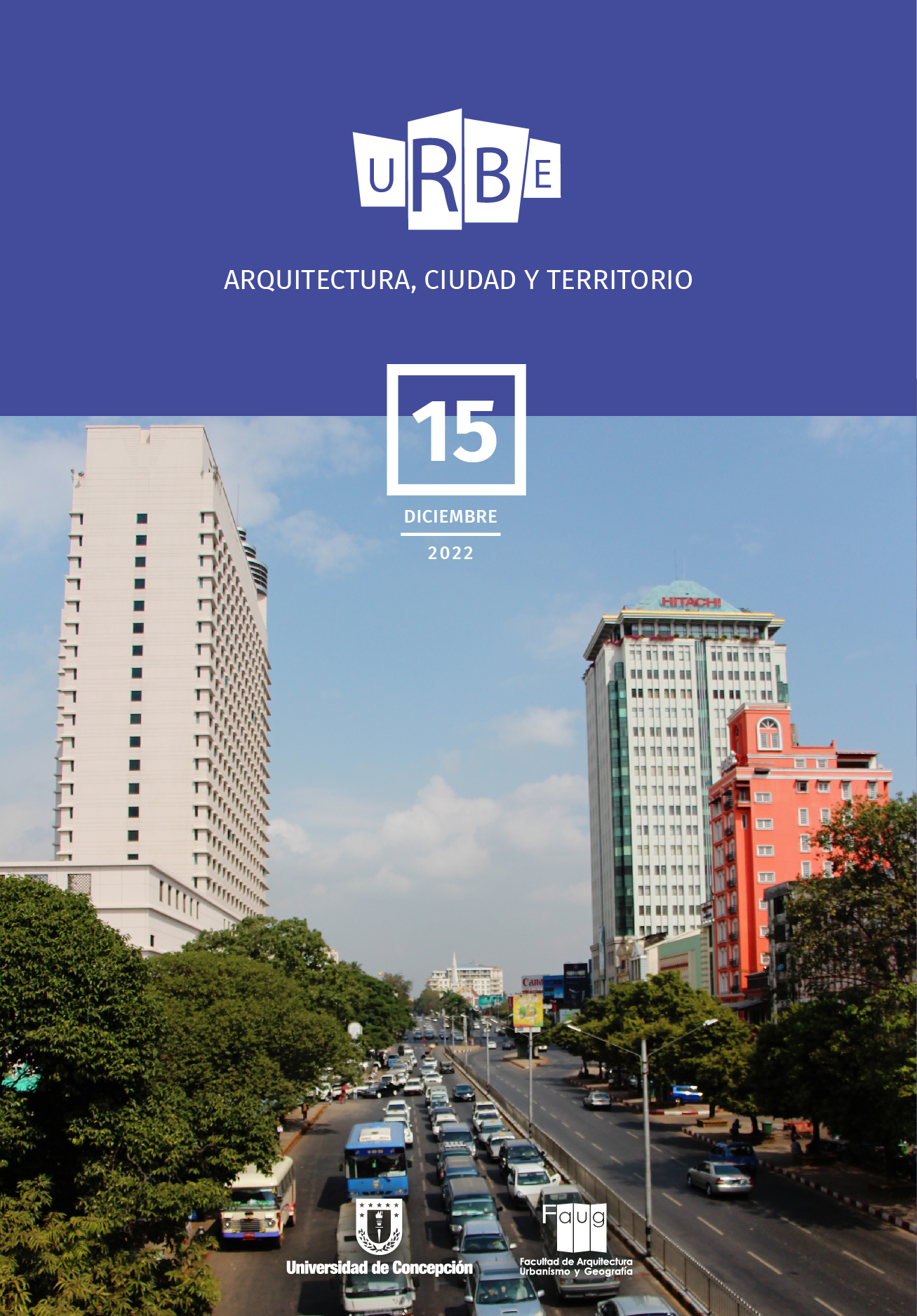The obstinate memory of Ranguelmo: life and heritage around the railway and the branch between Ñuble and Biobío
DOI:
https://doi.org/10.29393/UR15-2MOCC40002Keywords:
Railway heritage, patrimonialization, oral memoryAbstract
In the town of Ranguelmo, commune of Coelemu, Ñuble Region, there is an oral and tacit memory associated with the railway past of the surroundings and a remembrance of the forms of daily social construction that it generated. Experiences and materialities that are reflected in the reproduction of a historical memory are is passed on between generations of the locality. However, at present, Ranguelmo’s memory and collective orality resists with difficulties against the ravages of time and social changes. The experiences and stories of the glory days of the railway have been extinguished, disappearing without leaving records or testimonies that allow the memories of past experiences to be duly inherited by new generations, who well perceive the important role of the Rucapequén branch and its main station Ranguelmo in their identities and local heritage. This article seeks to present the results and experience associated with a participatory heritage investigation with the community of the town of Ranguelmo. In particular, we propose to identify, socialize and value the tangible and intangible heritage related to the Ranguelmo train branch. Through the conjunction of qualitative and participatory methodologies that allow an important rescue of historical memory, material and immaterial heritage associated with the branch, revitalizing memory and orality that come to reinforce Ranguelmo’s identity.
Downloads
References
Alarcón, N. (2020). Fracturas metabólicas del extractivismo forestal y respuestas comunitarias frente a la escasez hídrica: El caso de Ranguelmo en la región de Ñuble. Universidad de Concepción, Facultad de Ciencias Sociales, Programa de Magíster en Investigación Social y Desarrollo.
Alegría-Licuime, L., Acevedo-Méndez, P., & Rojas-Sancristoful, C. (2017). Patrimonio cultural y memoria: El giro social de la memoria. Revista Austral de Ciencias Sociales, 34, 21-35.
Almonacid, F. (2011). Transporte ferroviario y mercado agropecuario en Chile, 1930-1960. Revista Historia Agraria, 53, 97-128.
Álvarez, J. (2019). El desmantelamiento de la Empresa de los Ferrocarriles del Estado: Historia oral del “ferrocidio” en La Calera (1973-1995). Instituto de Historia y Ciencias Sociales, Universidad de Valparaíso.
Arévalo, J. M. (2004). La tradición, el patrimonio y la identidad. Revista de estudios extremeños, 60(3), 925-956.
Contreras, E., & Gutiérrez, S. (2020). Racionalización y Represión. Los primeros pasos para una privatización de la Empresa de Ferrocarriles del Estado en el Gran Concepción 1973-1976. Facultad de Educación, Departamento de Historia, Universidad de Concepción, Concepción.
Correa, M. (2021). La Historia del despojo: El origen de la propiedad particular en el territorio mapuche. Pehuén Editores.
Dormaels, M. (2011). Patrimonio, patrimonialización e identidad. Hacia una hermenéutica del patrimonio. Revista Herencia, 24(1-2).
Edward, A., & Piedad, M. (2001). La Construcción de los Ferrocarriles en Chile 1850-1913. Revista Austral de Ciencias Sociales, 5, 143-161.
González-Monfort, N. (2019). La educación patrimonial, una cuestión de futuro. Reflexiones sobre el valor del patrimonio para seguir avanzando hacia una ciudadanía crítica. El Futuro Del Pasado, 10, 123–144.
Guajardo, G. (2007). Tecnología, Estado y Ferrocarriles en Chile, 1850-1950. Fundación de los Ferrocarriles Españoles en coedición con el Centro de Investigaciones Interdisciplinarias en Ciencias y Humanidades de la Universidad Nacional Autónoma de México.
Guerrero, R. (2017). Memorias, significados y olvidos en la construcción social del patrimonio ferroviario del Sur de Chile. Revista Austral de Ciencias Sociales, 33,59-76.
Ibarra, C. (2019). La problemática carrilana en la construcción del ramal ferroviario Talcahuano – Chillán (1869 – 1873). Rev. Hist., 26(1), 115 - 148.
León, V. (2017). La decadencia del ferrocarril en la red centro sur de Chile (1950-1990). En XVI Jornadas Interescuelas. Departamento de Historia. Facultad de Humanidades. Universidad Nacional de Mar del Plata, Argentina.
Marín, S. (2013). Los ferrocarriles de Chile/Santiago. Cámara Chilena de la Construcción, junto con la Pontificia Universidad Católica de Chile y la Dirección de Bibliotecas, Archivos y Museos.
Núñez, A. (2010). La ciudad como sujeto: formas y procesos de su constitución moderna en Chile, siglos XVIII y XIX. Revista de Geografía Norte Grande, 46, 45-66.
Ortega, A., & Ibarra, M. (2020). La dimensión política del patrimonio. Reivindicación del valor social del ferrocarril en Chile entre dictadura y democracia (1973-2012). Perfiles Latinoamericanos, 29(58), 1 – 26.
Parada, M. (2020). Historia económica de Chillán: entre tradición y modernización restringida (1848-1890). Revista Signos Históricos, XXII (43), 112-151.
Pinto, S. (1986). Historia de los ferrocarriles en Chile: Volúmenes de carga y cantidad de pasajeros transportados (1901 - 1929). Revista Cuadernos de Historia, 6, 49-66.
San Martin, K., Abad, I., Aguilera, S., & Navarrete F. (2020). Descen-tralización de la gestión del patrimonio cultural: Una mirada desde los municipios. Revista Territorios y Regionalismos, 3,122-136.
Thomson, I. (2001). Los beneficios privados y sociales de inversiones en infraestructura: una evaluación de un ferrocarril del siglo XIX y una comparación entre ésta y un caso del presente. División de Recursos Naturales e Infraestructura Unidad de Transporte, Santiago de Chile.
Thomson, I., & Angerstein, D. (2000). Historia del Ferrocarril en Chile. Colección Sociedad y Cultura.
Zavala, J. (2015). Los parlamentos hispano-mapuches, 1593-1803: Textos fundamentales. Ediciones Universidad Católica de Temuco.
Published
How to Cite
Issue
Section
Copyright (c) 2022 Claudio Contreras, Nelson Alarcón Medina, Germán González Jara, Carmen Hernández Zamorano

This work is licensed under a Creative Commons Attribution 4.0 International License.
Revista URBE. Arquitectura, Ciudad y Territorio tiene licencia de Creative Commons Attribution 4.0 International (CC BY 4.0) y debe citarse correctamente.









